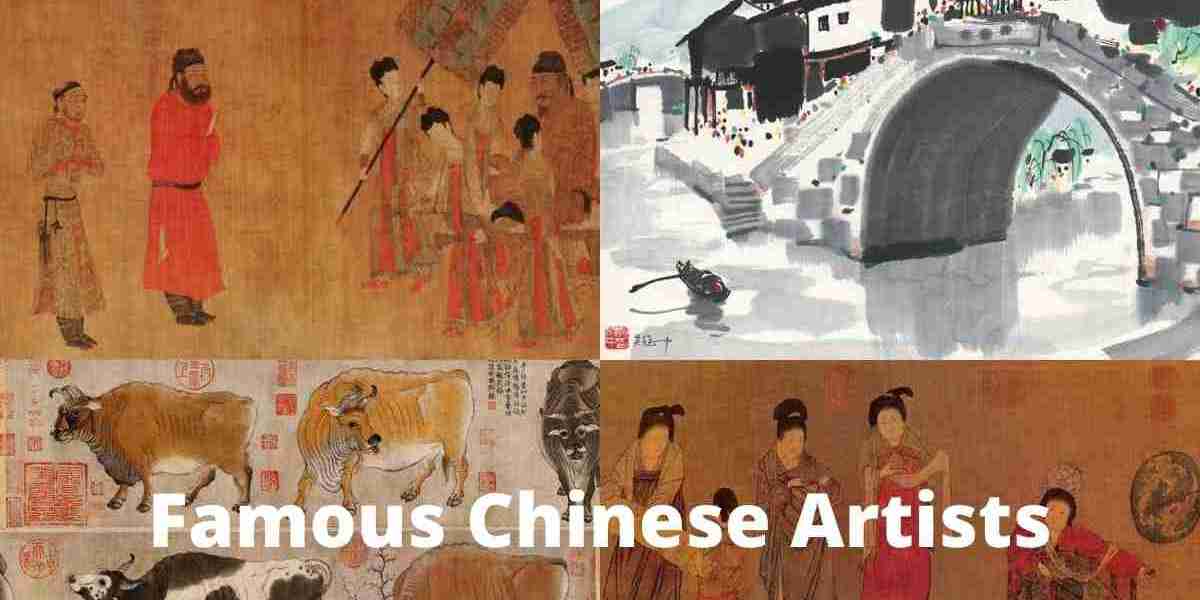China has a long and rich history of artistic expression, with countless artists leaving their mark on the world. From traditional ink paintings to modern conceptual art, Chinese artists have continuously evolved their craft while maintaining deep connections to their cultural roots. The influence of a famous Chinese artist often extends far beyond national borders, shaping global art movements and inspiring generations of creatives.
Traditional Chinese Art and Its Pioneers
Chinese art is known for its delicate brushwork, profound symbolism, and deep connection to nature and philosophy. Calligraphy, ink painting, and porcelain work have been central to artistic traditions for centuries. One of the most famous Chinese artists in history is Zhang Daqian, whose remarkable skills in both traditional and innovative styles made him a leading figure in Chinese painting.
Zhang Daqian was not only a master of traditional techniques but also an innovator who adapted his style over time. He initially gained recognition for his detailed imitations of classical Chinese paintings, particularly from the Tang and Song dynasties. However, as his career progressed, he developed a unique style that incorporated splashed-ink techniques, creating abstract and colorful compositions that set him apart from his contemporaries.
The Evolution of Artistic Expression in China
While traditional artists like Zhang Daqian honored classical techniques, the modern era brought new waves of creativity. Contemporary artists have pushed boundaries, incorporating Western influences while maintaining distinct Chinese characteristics. One of the most influential contemporary figures is Ai Weiwei, a famous Chinese artist known for his bold political statements and groundbreaking installations.
Ai Weiwei’s work spans multiple mediums, including sculpture, photography, film, and architecture. He gained international attention for his outspoken views on human rights and freedom of expression. His installation “Sunflower Seeds,” exhibited at Tate Modern in London, featured millions of handcrafted porcelain seeds, each painted by artisans in Jingdezhen, a city renowned for its porcelain craftsmanship. The piece symbolized mass production, individuality, and the loss of traditional craftsmanship in modern China.
The Global Impact of Chinese Artists
A famous Chinese artist does not only influence the local art scene but also shapes international artistic discourse. Chinese artists, both past and present, have been featured in major museums, biennales, and exhibitions worldwide. The blending of Eastern and Western techniques, themes of identity, and political activism have made Chinese artists key players in the global art scene.
One example is Xu Bing, a contemporary artist recognized for his experimental use of Chinese characters. His work often challenges perceptions of language and communication. In his famous installation “Book from the Sky,” he created an entire book using thousands of meaningless Chinese characters, prompting viewers to question the nature of written language and its role in shaping knowledge.
Preserving and Innovating Artistic Traditions
Despite modern innovations, many Chinese artists remain deeply connected to their roots. The balance between tradition and modernity defines the work of many contemporary painters, sculptors, and installation artists. The concept of shanshui (mountain-water) painting, for example, continues to inspire artists who reinterpret it through digital art, new media, and unconventional materials.
A famous Chinese artist like Cai Guo-Qiang exemplifies this blend of tradition and modernity. His use of gunpowder as an artistic medium is deeply symbolic, reflecting both destruction and creation. His large-scale explosion events, such as “Sky Ladder,” showcase the ephemeral beauty of his work while engaging with themes of power, history, and human ambition.
The Future of Chinese Art
The art world continues to recognize the contributions of Chinese artists across various disciplines. Whether through contemporary installations, traditional ink paintings, or multimedia works, these artists challenge perspectives and bring fresh narratives to global audiences.
A famous Chinese artist today may not only be someone who paints or sculpts but also a digital creator, a filmmaker, or a conceptual artist pushing the limits of artistic expression. With the rise of artificial intelligence, virtual reality, and other technologies, the definition of artistry is evolving. However, one thing remains constant—the deep cultural heritage that influences every brushstroke, installation, and performance piece.
Conclusion
The legacy of a famous Chinese artist extends beyond individual works, contributing to a broader cultural and artistic dialogue. From traditional masters like Zhang Daqian to contemporary figures like Ai Weiwei and Cai Guo-Qiang, Chinese artists have continuously shaped the art world through innovation, activism, and deep respect for their heritage. Their works continue to be studied, admired, and debated, ensuring that Chinese art remains an integral part of global artistic expression.






